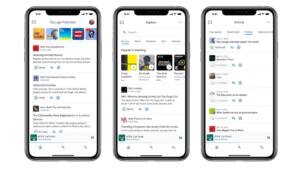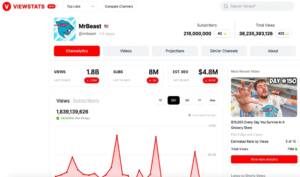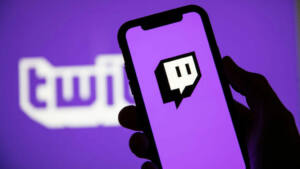As content creation continues to grow in popularity, brands are turning to content creators to help promote their products and services. With a variety of ways to promote brands within content, content creators have the ability to reach their audiences in unique and creative ways. In this blog post, we’ll explore some of the different brand promotion integration types for content creators.
Product Placements
Product placement is a type of brand promotion that involves the integration of a brand’s product or service into a piece of content in a way that feels natural and unobtrusive. It can be an effective way for brands to reach their target audience and increase brand awareness, as well as generate sales and drive traffic to their website.
There are two main types of product placement: overt and subtle. Overt product placement is when the product or service is prominently featured in the content, often with a close-up shot or a focus on the brand’s logo or packaging. Subtle product placement, on the other hand, is when the brand’s product or service is integrated more organically into the content, without drawing too much attention to itself.
When it comes to product placement, best practices include finding a content creator whose audience aligns with the brand’s target demographic, ensuring that the product or service is relevant to the content being created, and making sure that the placement feels natural and unforced.
Organic integrations, such as shoutouts and subtle product placements, can be especially effective when it comes to promoting a brand or product. Shoutouts are when a content creator mentions a brand or product in a piece of content, often in a natural and conversational way. Subtle product placements, on the other hand, involve integrating a brand’s product or service into the content in a way that feels natural and unobtrusive.
For example, a fashion influencer may incorporate a brand’s clothing into a styled outfit, or a food blogger may feature a brand’s product in a recipe video. In both cases, the placement feels natural and unobtrusive, and it’s more likely to resonate with the content creator’s audience.
One important consideration when it comes to product placement is disclosure. In many countries, content creators are required to disclose sponsored content, including product placements, to their audience. This can be done through a variety of methods, such as using hashtags like #ad or #sponsored, or including a disclosure statement in the content itself.
Shoutouts
Brand shoutouts are another popular way for content creators to promote a brand. Shoutouts are essentially a verbal or written recommendation for a product or service, often accompanied by a tag or mention of the brand’s social media handle. They are a quick and effective way for brands to reach a wider audience and increase their visibility.
There are a few best practices for organic shoutouts that content creators should keep in mind:
Choose brands you actually use and believe in: As with product placements, it’s important to only promote brands and products that align with your values and that you genuinely enjoy using. This will come across as authentic and build trust with your audience.
Be genuine and natural: When giving a shoutout, it’s important to sound like yourself and not like you’re reading off a script. Speak from the heart and talk about your personal experience with the brand or product.
Don’t overdo it: While shoutouts can be effective, it’s important not to overdo it and turn your content into one long advertisement. Be selective about the brands you promote and mix in other types of content as well.
Tag the brand: Make sure to tag the brand’s social media handle in your post or caption so that they are notified of the shoutout and can potentially share it with their own audience.
One example of a successful brand shoutout was when actress Reese Witherspoon gave a shoutout to the clothing brand Draper James on her Instagram account. Witherspoon, who is also the founder of the brand, posted a photo of herself wearing a Draper James dress and tagged the brand’s handle in the caption. The post received over 250,000 likes and helped to increase brand awareness and drive sales for Draper James.
Another example comes from YouTube content creator David Dobrik, who often gives shoutouts to his sponsor SeatGeek in his videos. Dobrik will typically include a segment where he surprises his friends with tickets to a concert or event that he bought on SeatGeek, and will mention the brand by name. This type of organic integration feels natural and helps to build brand loyalty among Dobrik’s audience.
Instagram Reels
Instagram Reels are a newer feature that has gained popularity among content creators. Reels are short videos that are typically 15-30 seconds in length and can include music, effects, and text. Brands can work with content creators to create Reels that feature their products or services. For example, a clothing brand may partner with a fashion influencer to create a Reel showcasing their latest collection.
Instagram Stories
Instagram Stories are another popular way for content creators to promote brands. Stories are short videos or images that disappear after 24 hours. Brands can work with content creators to create Stories that feature their products or services. For example, a food blogger may share a Story featuring a meal they made using a particular brand of cooking oil.
TikToks
TikTok has become a powerhouse in the world of social media, and content creators have taken notice. Brands can work with content creators to create TikToks that feature their products or services. For example, a fitness brand may partner with a fitness influencer to create a TikTok featuring a workout routine that incorporates their products.
Sponsored Posts
Sponsored posts are another common way for content creators to promote brands. This involves creating content that is sponsored by a brand and includes a call-to-action for the audience to engage with the brand. For example, a travel blogger may create a sponsored post promoting a hotel chain and including a discount code for their followers to use when booking a stay.
Giveaways
Sponsored brand giveaways are a popular form of influencer marketing where brands partner with content creators to offer a prize or giveaway to their followers. This can be an effective way to boost brand awareness, increase engagement, and generate leads for the brand.
The idea behind a sponsored brand giveaway is simple: a content creator offers their followers a chance to win a prize by following the brand on social media, subscribing to their email list, or engaging with their content in some other way. In exchange for running the giveaway, the content creator receives compensation from the brand.
There are several best practices that brands and content creators should follow when running sponsored brand giveaways:
Choose a prize that is relevant to your brand: The prize you offer should be relevant to your brand and attractive to your target audience. For example, a fitness influencer could offer a free gym membership or workout gear as a prize.
Collaborate with the right content creator: The content creator you partner with should have a similar target audience as your brand. For example, if you’re a beauty brand, you might want to partner with a makeup artist or beauty blogger.
Set clear rules and guidelines: Make sure you clearly communicate the rules of the giveaway to both the content creator and their followers. This should include the start and end dates of the giveaway, how to enter, and any other requirements.
Promote the giveaway: The content creator should promote the giveaway across all of their social media channels, as well as on their website and email list. The brand should also promote the giveaway on their own social media channels and email list.
Follow up with participants: After the giveaway is over, make sure you follow up with the participants. This can include sending them a thank you message and offering them a discount code or other special offer.
One example of a successful sponsored brand giveaway is the #StayHomeWithSoko giveaway by Soko Glam, a Korean beauty brand. Soko Glam partnered with several beauty influencers to offer their followers a chance to win a Korean skincare bundle worth $1,500. To enter the giveaway, participants had to follow Soko Glam on Instagram, like the giveaway post, and tag two friends in the comments. The giveaway generated over 20,000 entries and helped to increase brand awareness and engagement for Soko Glam.
Affiliate Marketing
Affiliate marketing is a form of promotion that involves earning a commission for promoting a brand’s products or services. Content creators can earn a commission by including an affiliate link in their content. For example, a fashion blogger may include an affiliate link for a clothing brand in their blog post or social media post.
In conclusion, there are many different ways for content creators to promote brands within their content. From product placements to affiliate marketing, there are a variety of integration types that can be used to effectively promote a brand. When done correctly, brand promotion integration can benefit both content creators and brands by providing unique and creative ways to reach audiences.




